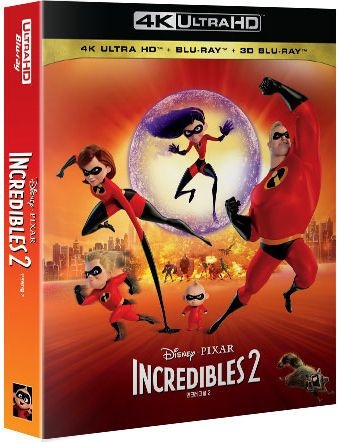
In our first test, we will compare projectors using the two new 4K UHD DLP chips. To illustrate the misleading nature of the term faux-K, let's do some side by side comparisons of six different 4K projectors, five of which are using a variation of pixel-shifting, and one using native 4K chips.
#Incredibles real or fake 4k 1080p
Even the current JVC and Epson models that use two-phase pixel shifting on 1080p chips can produce pictures that come a lot closer to replicating a full 4K picture than one might imagine possible-sometimes they can even beat the 4K UHD DLP chips in the subjective impression of image sharpness. And they are all capable of producing impressive 4K resolution pictures. Today there are 4K projectors using chips in various physical resolution formats - 1920 x 1080, 2716 x 1528, 3840 x 2160, and 4096 x 2160.



It is a terrific technology that is hard not to love once you see it.Īnd the simple fact is this: we can no longer glance at an image on the screen and know the physical resolution the chips in the projector like we could before. In reality, pixel shifting has produced rapid advances in picture resolution at prices far lower than you must pay for projectors that have native resolution 4K chips. It often connotes that there is something inauthentic and undesirable about the pixel shifting technologies and the 4K projectors that use them. To no surprise, this has fueled a lot of controversy over what is "true 4K" and what is often disparagingly referred to as "faux-4K" or simply "faux-K." This term is widely used by industry personnel, reviewers, and consumers alike. It uses four-phase pixel shifting to create 8.3 million pixels. They followed that with an 0.47" DLP 4K UHD chip which has a physical mirror matrix of 1920 x 1080. Then Texas Instruments released an 0.66" 4K UHD chip with a physical mirror matrix of 2716 x 1528 which uses two-phase pixel shifting to create 8.3 million pixels, which is 4K UHD. Epson followed using pixel shifting on 1920 x 1080 3LCD chips. This was a radical new approach to getting substantially higher picture resolution out of native 1920 x 1080 D-ILA chips. The revolution began with JVC's introduction of pixel shifting in 2013. The chip's physical resolution, at least in the home theater world, has become irrelevant. In our new reality of 4K resolution and pixel shifting technologies, there is ZERO correlation between native resolution (the number of physical pixels on the chip) and the actual resolution of the picture you see on the screen. So we all grew up KNOWING that the "native" resolution of the chips was directly related to ultimate picture quality on the screen.

Anyone in the projector biz could tell at a glance just from looking at pictures on the screen what the native resolution of the projector was. Visible pixelation (the screendoor effect) on lower resolution projectors was supremely annoying and desperately to be avoided. When comparing these projectors there were obvious differences in detail and image sharpness. There was a massive visible difference in picture quality between SVGA and XGA, and between WXGA and Full HD 1080p. People are concerned about what is true or genuine 4K and what is fake or "faux-K." What is the difference, and is it anything to worry about? In the end, as we go about categorizing and defining these products, the practical question is what makes a 4K projector 4K?īack in the day, the native resolution of a projector was a big deal, and rightly so. The revolutionary technology of pixel-shifting has injected a lot of controversy and confusion into the world of 4K projectors.


 0 kommentar(er)
0 kommentar(er)
